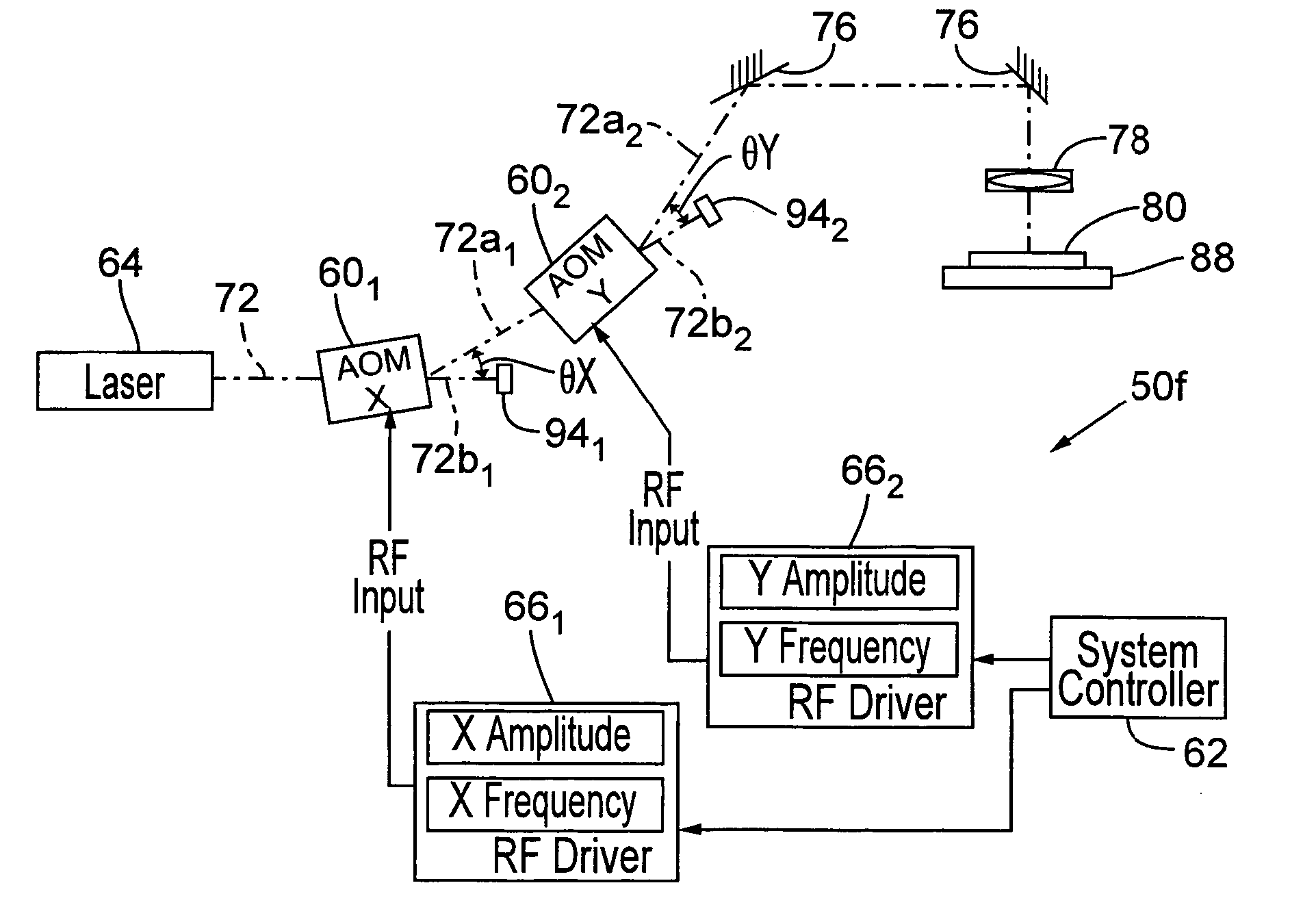AOM modulation techniques employing plurality of transducers to improve laser system performance
a technology of aom modulation and laser system, which is applied in the field of laser micromachining, can solve the problems of inability to achieve the effect of reducing the cost of workpieces in terms of materials and/or prior processing, affecting the performance of laser systems, and affecting the stability of laser pulses, etc., to achieve the effect of facilitating the substantially full extinction of laser beams, preventing unwanted laser energy from affecting the performance of workpieces, and facilitating laser pulse energy stability
- Summary
- Abstract
- Description
- Claims
- Application Information
AI Technical Summary
Benefits of technology
Problems solved by technology
Method used
Image
Examples
Embodiment Construction
[0058]FIG. 6 shows an embodiment of a laser system 50 that employs a modulation-enhanced AOM 60 as a pulse gating device, the AOM 60 having a beam entrance surface 52 and a beam exit surface 54. With reference to FIG. 6, a laser system controller 62 provides control signals directly or indirectly to a laser 64 and an RF driver 66 that directly or indirectly controls the performance of the AOM 60 as described later in more detail. The laser 64 emits a laser beam that is propagated along an optical path 72 that may contain a variety of optical components 74, such as beam-expanding optics, or a variety of turn mirrors (not shown) before the laser beam enters the AOM 60 that propagates zero- and / or first-order beams 16 and 18. The laser beam is preferably a Q-switched or pulsed laser beam for most applications, but may be a continuous-wave (CW) beam for some applications.
[0059] Typically, one of the zero-order beams 16 or first-order beams 18, is subsequently directed by one or more tu...
PUM
| Property | Measurement | Unit |
|---|---|---|
| cooperative deflection angle | aaaaa | aaaaa |
| Bragg angle | aaaaa | aaaaa |
| wavelengths | aaaaa | aaaaa |
Abstract
Description
Claims
Application Information
 Login to View More
Login to View More - R&D
- Intellectual Property
- Life Sciences
- Materials
- Tech Scout
- Unparalleled Data Quality
- Higher Quality Content
- 60% Fewer Hallucinations
Browse by: Latest US Patents, China's latest patents, Technical Efficacy Thesaurus, Application Domain, Technology Topic, Popular Technical Reports.
© 2025 PatSnap. All rights reserved.Legal|Privacy policy|Modern Slavery Act Transparency Statement|Sitemap|About US| Contact US: help@patsnap.com



